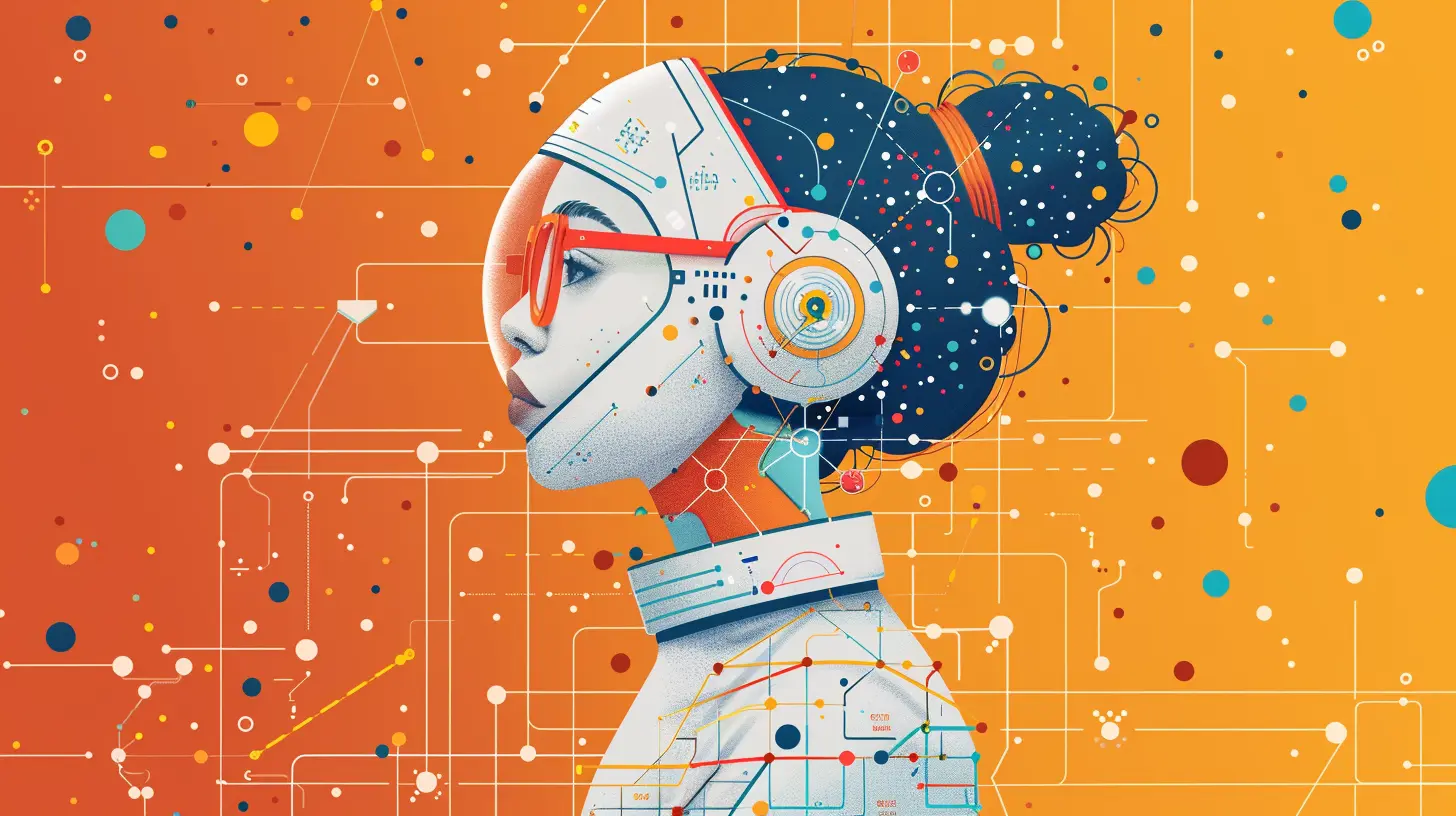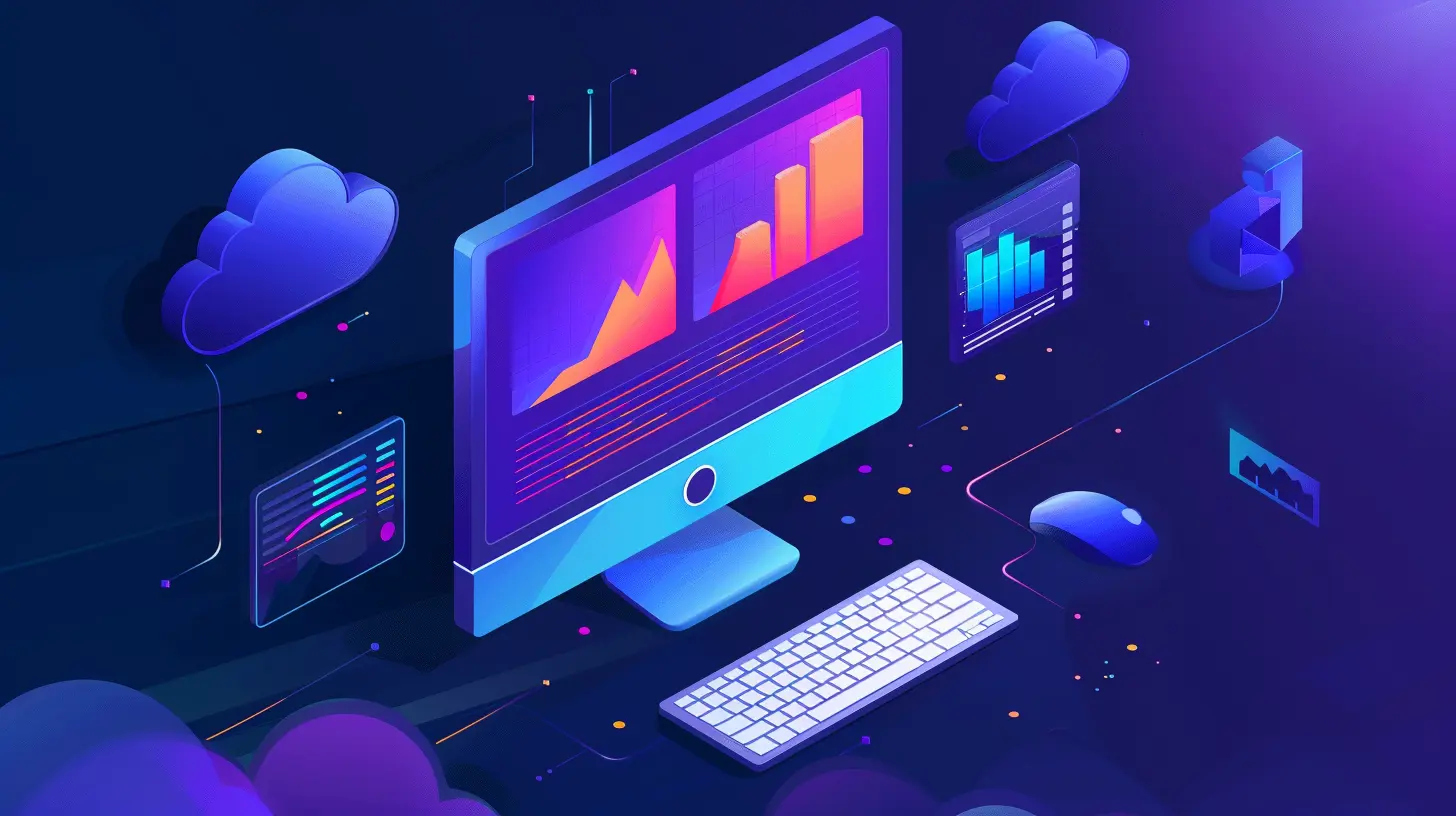How Machine Learning is Redefining Business Intelligence and Analytics
23 February 2025
Machine learning (ML) is no longer just a fancy term thrown around in tech circles. It's not some futuristic technology that only belongs in sci-fi movies or research labs. It’s here. And not only is it here, but it’s also changing the way businesses operate on a daily basis. One of the biggest ways it's making waves? Business intelligence (BI) and analytics.
You’ve probably heard of business intelligence before. It's the process of gathering and analyzing data to make better decisions. But with the rise of machine learning, BI is evolving. It’s becoming smarter, faster, and more intuitive. And that’s why businesses, both small and large, are hopping on this train.
So, how exactly is machine learning redefining business intelligence and analytics? Let’s break it down.

The Relationship Between Business Intelligence and Machine Learning
Before we dive into the nitty-gritty, it’s important to understand how BI and ML are connected. Business intelligence focuses on collecting historical data, analyzing it, and generating insights. Traditionally, BI systems rely on humans to interpret the data and make decisions based on those insights.Enter machine learning. ML is a subset of artificial intelligence (AI) that allows computers to learn from data without being explicitly programmed. Instead of humans having to sift through mountains of data to find patterns, ML algorithms can do this automatically. What’s more, ML can continuously improve as it’s exposed to more data. It’s like having a super-smart assistant who learns and adapts as your business grows.
Incorporating ML into BI systems allows businesses to move from reactive decision-making to proactive and predictive decision-making. Instead of just looking at past data, you can predict future trends, spot potential issues before they arise, and make decisions that put you ahead of the curve.

Smarter Data Processing: From Raw Data to Actionable Insights
Let’s face it—businesses generate a lot of data. We’re talking about a tidal wave of information coming from multiple sources like social media, customer transactions, website analytics, and more. And while data is often referred to as the new oil, it’s pretty much useless unless you can refine it.Traditionally, this refining process involved a lot of manual labor. Analysts would have to clean the data, process it, and then try to make sense of it. It was time-consuming and prone to human error.
But with machine learning, this process is a whole lot smoother. ML algorithms can clean and process data faster than any human could. They can spot outliers, correct errors, and even fill in missing data points. This means businesses can spend less time on data prep and more time on using that data to make impactful decisions.
ML also ensures that the data you’re working with is more accurate, which means better insights and smarter decision-making. It’s like having a digital detective that sifts through all the noise to find the most valuable clues.

Predictive Analytics: Seeing the Future Before It Happens
One of the most exciting applications of machine learning in BI is predictive analytics.Remember when we used to rely on past data to make decisions? It worked, but it had its limitations. You could see what happened, but it didn’t always give you a clear picture of what will happen next. It’s like trying to drive a car by only looking in the rearview mirror.
Predictive analytics, powered by machine learning, changes the game. By analyzing both historical and real-time data, ML can predict future trends, customer behavior, and potential business outcomes. It’s like having a crystal ball for your business.
For example, retailers can use predictive analytics to forecast demand for certain products. If the algorithm predicts a spike in demand for a certain item next month, the retailer can stock up accordingly, avoiding potential shortages or overstocking. Similarly, banks can use predictive analytics to identify customers who are likely to default on loans, allowing them to take preventative measures.
This kind of foresight helps businesses stay one step ahead of the competition. Instead of being reactive and scrambling to fix problems after they happen, businesses can be proactive and take steps to avoid those problems altogether.

Enhanced Personalization: Tailoring Experiences Like Never Before
We’ve all experienced personalization at some point. Whether it’s Netflix recommending your next binge-worthy series or Amazon suggesting products based on your browsing history, personalization is everywhere. And it’s all thanks to machine learning.In the context of business intelligence, machine learning allows businesses to personalize their offerings like never before. By analyzing customer data, ML algorithms can identify individual preferences and behaviors, allowing businesses to tailor their products, services, and marketing efforts to each customer.
This kind of hyper-personalization is a game-changer. It’s no longer about broad, one-size-fits-all strategies. Instead, businesses can create highly targeted campaigns that speak directly to the needs and desires of individual customers.
For instance, an e-commerce company can use ML to analyze a customer’s browsing and purchase history. Based on this data, the company can recommend specific products that the customer is likely to be interested in. This not only enhances the customer experience but also increases the chances of making a sale.
At the end of the day, customers want to feel understood. They want businesses to anticipate their needs and offer solutions before they even realize they need them. Machine learning makes this possible.
Real-Time Decision-Making: Acting in the Moment
In the fast-paced world of business, timing is everything. Decisions often need to be made quickly, and having access to real-time data can make all the difference.Machine learning takes real-time decision-making to a whole new level. Instead of waiting for reports to be generated and analyzed, ML algorithms can process data as it’s being collected, providing businesses with real-time insights. This means you can make decisions in the moment, based on the most up-to-date information available.
For example, a financial institution can use ML to monitor transactions in real-time and detect potential fraudulent activity. If the algorithm spots something suspicious, it can immediately flag the transaction, allowing the institution to take action before any damage is done.
Similarly, in the world of digital marketing, real-time decision-making allows businesses to optimize their campaigns on the fly. If an ad isn’t performing well, an ML algorithm can quickly identify the issue and suggest changes to improve its effectiveness.
In a world where things are constantly changing, having the ability to make real-time decisions is invaluable. It allows businesses to stay agile, adapt to new information, and seize opportunities as they arise.
Automation of Routine Tasks: Freeing Up Human Brainpower
Let’s be honest—there are plenty of routine tasks in business that are just plain tedious. Data entry, report generation, and manual analysis are just a few examples. These tasks take up valuable time and can be mentally draining.But what if you could automate these tasks? That’s where machine learning comes in.
By automating routine tasks, machine learning frees up human employees to focus on higher-level, strategic work. Instead of spending hours on data entry, employees can spend their time analyzing the insights generated by machine learning algorithms. Instead of manually generating reports, employees can focus on using those reports to drive business growth.
It’s like having a tireless assistant who handles all the boring stuff so you can focus on the big picture.
Overcoming the Challenges: Is Machine Learning the Perfect Solution?
Okay, machine learning sounds amazing, right? But let’s not kid ourselves. Like any technology, it’s not without its challenges.For one, implementing machine learning isn’t as simple as flipping a switch. It requires a solid infrastructure, quality data, and skilled professionals who know how to work with ML algorithms. Not to mention, there’s often a learning curve involved.
There’s also the issue of data privacy. With so much data being collected and analyzed, businesses need to be mindful of how they handle sensitive information. Customers are becoming more aware of their privacy rights, and businesses need to ensure they’re using data responsibly and transparently.
Lastly, while machine learning is incredibly powerful, it’s not perfect. Algorithms can make mistakes, especially if they’re trained on biased or incomplete data. That’s why it’s important to have human oversight. Machine learning should be seen as a tool to enhance human decision-making, not replace it entirely.
The Future of Business Intelligence and Machine Learning
So, where do we go from here? Well, the future looks pretty bright.As machine learning technology continues to advance, we can expect even more sophisticated BI and analytics systems. We’re talking about systems that can not only predict future trends but also provide detailed explanations for why certain predictions are made. This level of transparency will be crucial for building trust in machine learning solutions.
We’re also likely to see greater integration of machine learning into everyday business tools. Soon, machine learning may become so embedded in BI systems that you won’t even notice it’s there. It will just be a natural part of how businesses operate.
At the end of the day, machine learning is redefining business intelligence and analytics in ways we couldn’t have imagined just a few years ago. It’s giving businesses the power to make smarter decisions, faster. It’s helping them stay ahead of the competition. And it’s making the world of business more efficient and more personalized.
The future is here. And machine learning is leading the charge.
all images in this post were generated using AI tools
Category:
Machine LearningAuthor:

Adeline Taylor
Discussion
rate this article
17 comments
Eva McQuaid
Machine learning truly transforms business intelligence, enabling deeper insights and enhancing decision-making processes significantly.
March 21, 2025 at 4:47 AM

Adeline Taylor
Thank you! I'm glad you found the article insightful. Machine learning indeed plays a pivotal role in revolutionizing business intelligence and analytics.
Brooke McNaughton
Machine learning enhances business intelligence by enabling more accurate predictions, automating data analysis, and uncovering insights that drive strategic decisions.
March 20, 2025 at 3:23 AM

Adeline Taylor
Thank you for your insight! Indeed, machine learning significantly boosts business intelligence by improving prediction accuracy and automating data insights, allowing for informed strategic decisions.
Zadie McBride
Machine learning is revolutionizing business intelligence, transforming data into actionable insights with unprecedented speed and accuracy. Embrace this evolution to stay competitive.
March 17, 2025 at 3:26 AM

Adeline Taylor
Thank you for your insightful comment! Indeed, machine learning is reshaping the landscape of business intelligence, enabling faster and more accurate decision-making. Embracing these advancements is key to staying ahead in today's competitive market.
Annabelle Walker
Machine learning is like the new coffee for business intelligence—once you’ve had a sip, there’s no going back! It's brewing up some serious insights and helping companies leap from guesswork to game-changers. Just remember: with great data, comes great responsibility (and maybe a few caffeinated late nights)!
March 15, 2025 at 4:18 AM

Adeline Taylor
Absolutely! Machine learning is revolutionizing business intelligence by turning data into actionable insights, empowering companies to make informed decisions and innovate like never before. Cheers to that!
Fletcher Newman
Exciting insights! It’s fascinating to see how machine learning is not just a buzzword anymore but a game-changer for business intelligence. The ability to uncover hidden patterns and make data-driven decisions is transforming companies into smarter, more agile entities. Can’t wait to see what the future holds!
March 14, 2025 at 8:22 PM

Adeline Taylor
Thank you! I completely agree—machine learning is indeed revolutionizing business intelligence and enabling smarter decision-making. Exciting times ahead!
Tessa West
In the dawn of data's embrace, Machine learning weaves a new lace. Insights bloom where numbers dance, Transforming chance into advance. With each algorithm's gentle sway, Business minds find clearer ways, As intelligence evolves, so shall we, Charting paths through tech's vast sea.
March 13, 2025 at 8:26 PM

Adeline Taylor
Thank you for your poetic reflection! You've beautifully captured the essence of how machine learning is revolutionizing business intelligence and analytics.
Blake Rogers
Machine learning in business intelligence? It's like giving your spreadsheets a brain! They now analyze data faster than my morning coffee kicks in—just hope they don’t start charging for consulting!
March 13, 2025 at 4:48 AM

Adeline Taylor
Absolutely! Machine learning supercharges business intelligence, enabling rapid insights and smarter decision-making—no extra fees required!
Harrison Wilcox
This article provides valuable insights into the transformative impact of machine learning on business intelligence and analytics. By automating data analysis and generating actionable insights, ML enhances decision-making processes. However, it's crucial to address potential ethical concerns and ensure transparency in algorithms to maximize benefits while minimizing risks.
March 12, 2025 at 5:30 AM

Adeline Taylor
Thank you for your thoughtful comment! I completely agree that while machine learning offers transformative advantages, addressing ethical concerns and ensuring transparency are vital for responsible implementation.
Diana Bass
Transforming insights into action!
March 10, 2025 at 8:41 PM

Adeline Taylor
Thank you! I'm glad you found it insightful. Harnessing machine learning truly empowers businesses to act on data effectively!
Candace Rosales
Fascinating read! I'm curious about the specific ways machine learning is transforming traditional business intelligence. How do these advancements impact decision-making processes? Excited to see how companies leverage these tools for competitive advantage!
March 8, 2025 at 3:27 AM

Adeline Taylor
Thank you for your interest! Machine learning enhances business intelligence by automating data analysis, uncovering insights from large datasets, and enabling predictive analytics. This speeds up decision-making, enhances accuracy, and allows companies to respond proactively to market trends, ultimately providing a significant competitive edge.
Thalia Hamilton
This article offers insightful perspectives on the transformative role of machine learning in enhancing business intelligence. It's exciting to see how these advancements will shape decision-making and strategic insights in the future.
March 7, 2025 at 9:27 PM

Adeline Taylor
Thank you for your thoughtful comment! I'm glad you found the insights on machine learning's impact on business intelligence exciting. It's indeed a transformative time for decision-making processes.
Kara Wade
Machine learning is revolutionizing business intelligence by transforming vast data into actionable insights, driving smarter decision-making and innovation. Embracing these advancements is essential for companies aiming to stay competitive in today’s market.
March 2, 2025 at 6:03 AM

Adeline Taylor
Thank you for your insightful comment! You're absolutely right—leveraging machine learning is crucial for organizations to unlock the full potential of their data and maintain a competitive edge.
Cypher McGuffey
This article succinctly highlights the transformative impact of machine learning on business intelligence and analytics. The integration of advanced algorithms and data-driven insights is indeed reshaping decision-making processes. However, it’s crucial to consider ethical implications and data privacy concerns as businesses adopt these technologies for competitive advantage.
February 28, 2025 at 12:27 PM

Adeline Taylor
Thank you for your insightful comment! I completely agree that while machine learning is revolutionizing business intelligence, addressing ethical implications and data privacy is essential for responsible adoption.
Xylo Chapman
Machine learning is the new crystal ball for businesses—if you're not using it, you're basically reading tea leaves. Embrace the future or get left behind in the analytics Stone Age!
February 27, 2025 at 11:58 AM

Adeline Taylor
Absolutely! Machine learning empowers businesses with data-driven insights, ensuring they stay competitive in a rapidly evolving landscape. Embracing it is essential for future success.
Delta Cole
In a world where data whispers secrets, machine learning emerges as the visionary translator. As algorithms evolve and patterns materialize, businesses find themselves navigating uncharted territories. What hidden insights lie beneath the surface? The future of intelligence may not just be smart; it could be eerily prophetic. Are we ready to listen?
February 26, 2025 at 5:28 AM

Adeline Taylor
Thank you for your insightful comment! Indeed, as machine learning continues to evolve, it opens up new avenues for uncovering valuable insights, transforming how businesses make decisions. The potential is vast, and we must be prepared to harness it responsibly.
Trixie Cooper
Inspiring insights! Excited for the future ahead!
February 25, 2025 at 4:13 AM

Adeline Taylor
Thank you! I'm glad you found it inspiring—exciting times ahead indeed!
Xavier McClain
Unlocking insights with machine learning transforms business intelligence for success!
February 24, 2025 at 9:07 PM

Adeline Taylor
Thank you! Machine learning indeed empowers businesses to gain deeper insights and make data-driven decisions more effectively.
MORE POSTS

Exploring the Future of Drone Deliveries in E-Commerce

The Future of Wearable Technology and E-Commerce Integration

Tools Every Content Creator Should Have in Their Toolkit

Drone Security: Protecting Your Airborne Data

The Legal Landscape of Data Privacy: What Consumers Should Know

The Intersection of 5G and Cybersecurity

How to Master Drone Flying for Professional Aerial Videography

The Role of Machine Learning in E-Commerce Personalization

Upping Your Game with Augmented Reality Content Creation Tools

How to Use Docker and Kubernetes for Efficient App Deployment

The Shift Toward Hyper-Personalization in E-Commerce Marketing